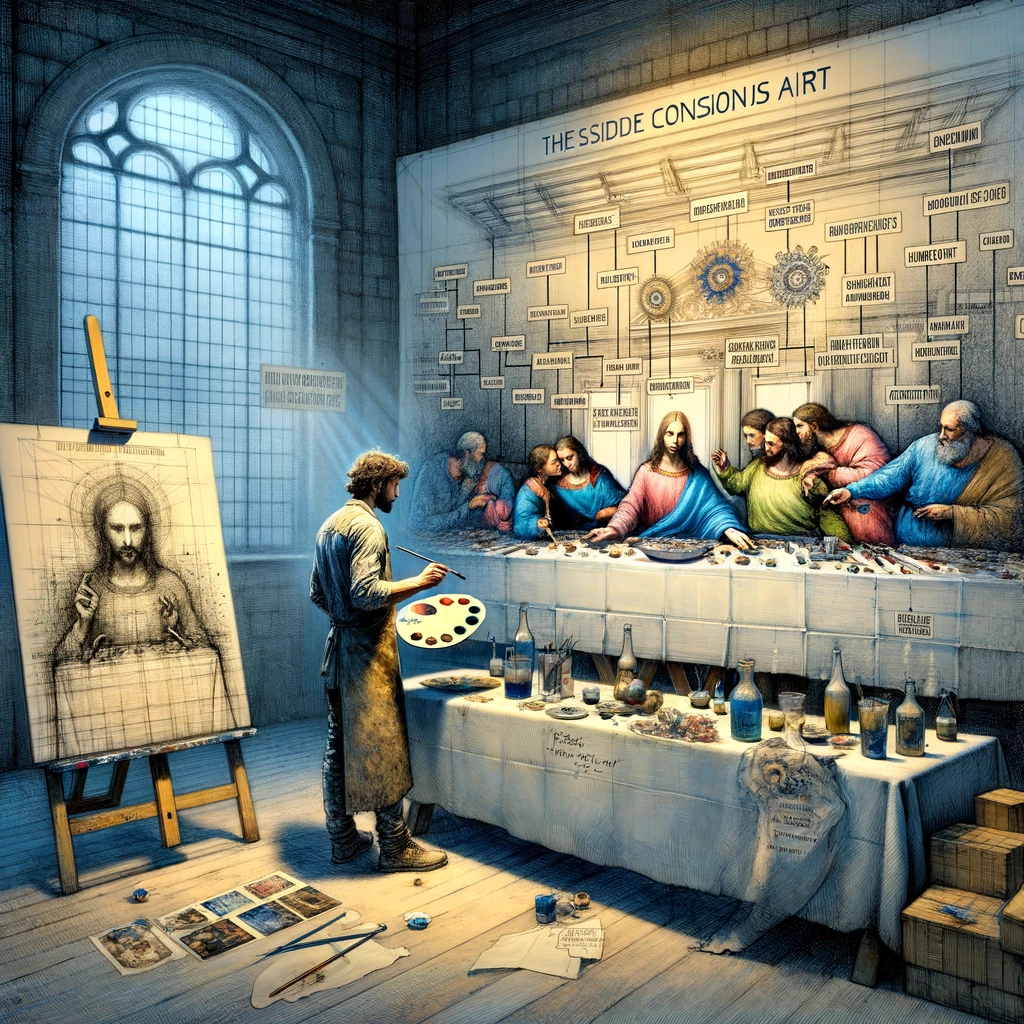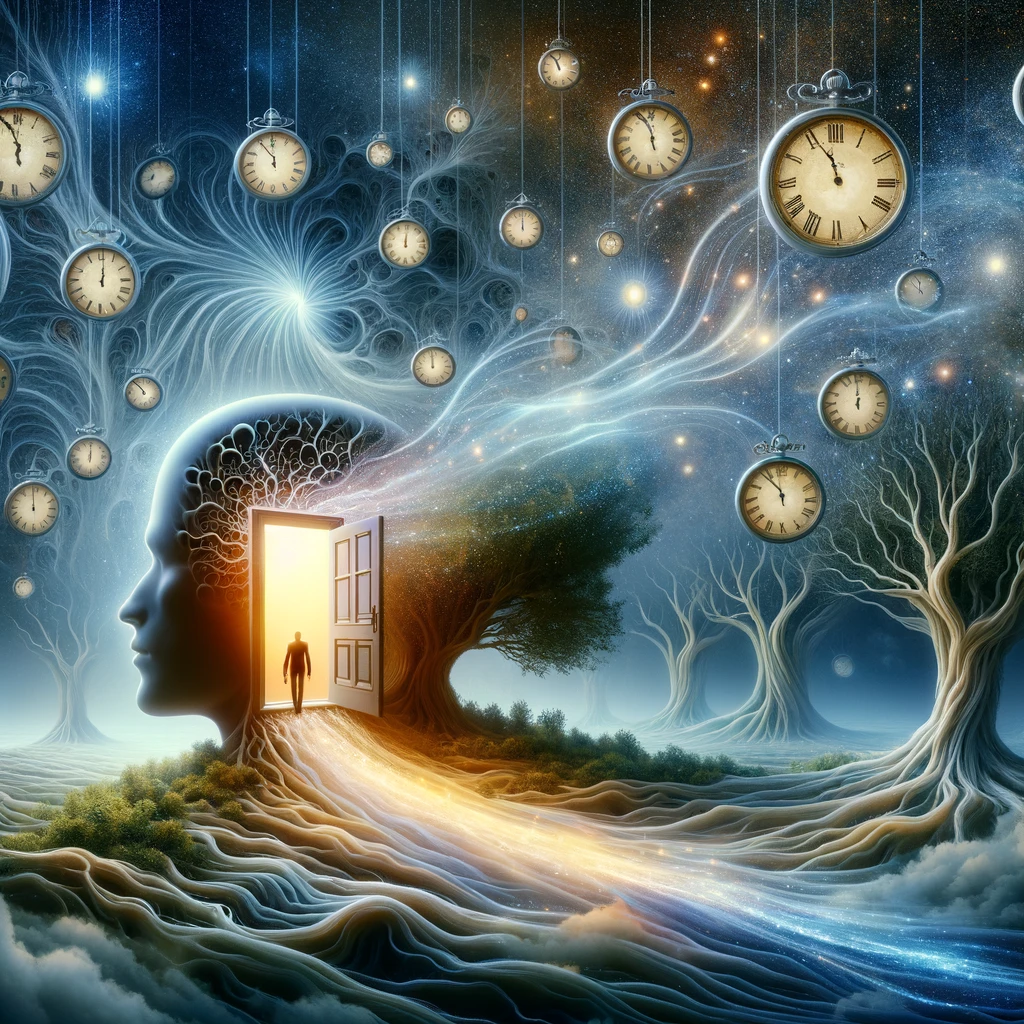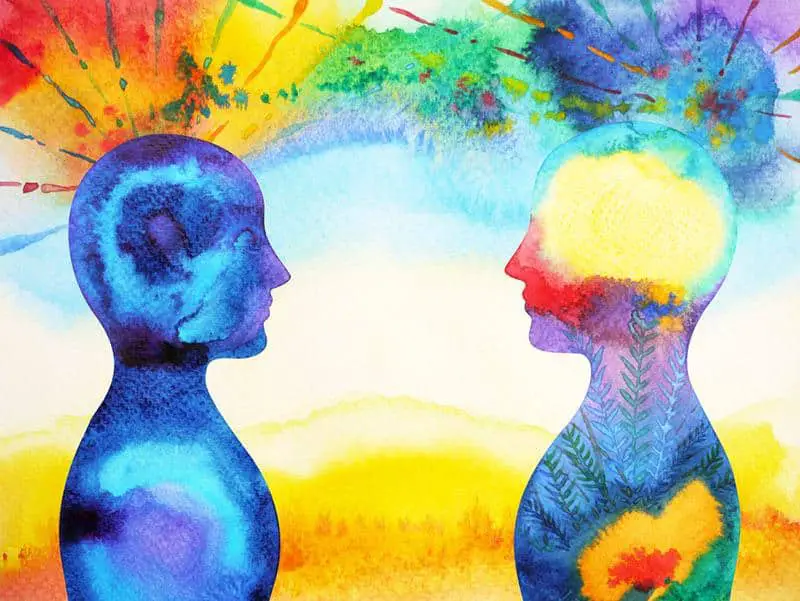Art is not just a visual feast; it’s a journey into the hidden corridors of the human mind. It holds the power to stir profound emotions, often resonating with the untouched depths of our subconscious.
In this exploration, we delve into the enigmatic relationship between artistic expression and the subconscious mind.
From the vibrant strokes of a painter’s brush to the intricate lines of a sketch, art becomes a medium through which the unspoken and unseen feelings surface, bridging the gap between our internal experiences and the external world.
It Depends What Type of Art Your Producing.
There’s Two Types Of Art
Conscious Art
vs.
Sub-Conscious Art
Conscious Art Explained:

- Definition and Characteristics:
- Conscious art is created with deliberate intent and awareness. Artists engaging in conscious art are usually aware of their artistic goals, the message they want to convey, and the techniques they employ.
- It often involves planning, skillful execution, and a clear understanding of the art form’s principles.
- Cognitive Process:
- This type of art heavily relies on the cognitive functions of the brain, involving decision-making, problem-solving, and critical thinking.
- Artists often use conscious art to express specific ideas, social commentary, or deliberate symbolism.
Leonardo da Vinci’s “The Last Supper” is a prime example of Conscious Art. Da Vinci didn’t just paint; he strategically planned each element to evoke certain emotions and convey a narrative, demonstrating the essence of intentionality in art.
Sub-Conscious Art Explained

- Definition and Characteristics:
- Sub-conscious art stems from the deeper, often unexplored layers of the mind. It’s less about deliberate intent and more about instinct, emotion, and the unfiltered expression of the psyche.
- This form of art often appears abstract, symbolic, and can be surreal or unexpected in its manifestation.
- Cognitive Process:
- The creation of sub-conscious art is closely linked to processes that occur outside of our conscious awareness, such as dreams, intuition, and spontaneous imagination.
- This type of art is often associated with the release of inner experiences, emotions, and thoughts that are not fully conscious.
- Art Historical Context:
- Movements like Surrealism and Abstract Expressionism are prime examples of sub-conscious art. Artists like Salvador Dalí or Jackson Pollock relied heavily on spontaneity and subconscious processes in their work.
- Psychological and Therapeutic Aspects:
- From a psychological perspective, sub-conscious art is closely aligned with psychoanalytic theories. It can be a powerful tool in art therapy, allowing individuals to express and explore subconscious thoughts and feelings.
- It provides insight into the more hidden aspects of the psyche and can be a pathway to personal healing and self-discovery.
Subconscious Art: What is Surrealism?

Surrealism, more than just an artistic trend, was a cultural revolution emerging in Europe around 1924, post World War I. This movement sought to unlock the creative potential of the unconscious mind, blending dream with reality in unprecedented ways.
Inspired by the theories of Sigmund Freud, the father of psychoanalysis, surrealists explored the subconscious to create art that deeply resonated with human emotions. They viewed Freud’s work as a key to unveiling the hidden layers of the psyche, making surrealism a vivid intersection of psychology and art.
By delving into the subconscious, surrealists sought to create art that was not just seen, but deeply felt, reflecting and challenging the complexities of human emotions and thoughts.
Sigmund Freud’s insights into the subconscious have dramatically shaped the arts, suggesting our deepest dreams and memories influence every stroke of creativity. Surrealism, pioneered by visionaries like Dalí and Magritte, brought this to life, translating the abstract depths of the mind onto canvas.
In the hands of therapists, art becomes a tool for self-discovery, a key unlocking the silent language of the subconscious. It’s a healing process, where the act of creation allows emotions to flow, thoughts to unfold, and personal truths to be acknowledged.
The artist’s journey is one of self-reflection, with the subconscious often steering the narrative. This interplay crafts a resonance that speaks to both creator and spectator, making art a mirror to our innermost selves. It’s this emotional dialogue that endows art with its power, bridging the conscious with the hidden, and touching those who engage with it on a universally profound level.
Final Thoughts: Art and the Human SubConscious Mind
Art isn’t just visual delight—it’s a deep dive into the hidden realms of our psyche, stirring emotions anchored in the subconscious. In this journey, we uncover how art serves as a portal for the silent stirrings within us, bringing to light what lies beneath the surface.
Art splits into two streams: the conscious, where intent and awareness shape masterpieces like da Vinci’s “The Last Supper,” and the subconscious, where instinct and emotion bleed into abstract forms as seen in Dalí’s dreamscapes or Pollock’s spontaneous drips.
Surrealism intertwines these realms, drawing on Freud’s psychoanalytic revelations to unlock a world where dream and reality converge, aiming to provoke and connect. Art, in every form, becomes a reflective pool of our innermost selves and a bridge to the unseen, touching us universally.
Through conscious and subconscious art, we see a complete narrative of human creativity. Each form, whether deliberate or instinctual, is a testament to the complex inner workings of the mind, offering a compelling expression of our deepest thoughts and emotions.
Here’s another article we just wrote about the sub-conscious reason why most people only read headlines.
Loved what you read?
Hit that share button and let the world in on the secret – we’d be thrilled!
Got thoughts? We’re all ears for your feedback, corrections, or a good old chat. Don’t be shy; drop us a line.
And hey, don’t miss out on our curated list of must-reads in the recommended books section.
Big thanks for diving in with us today!







